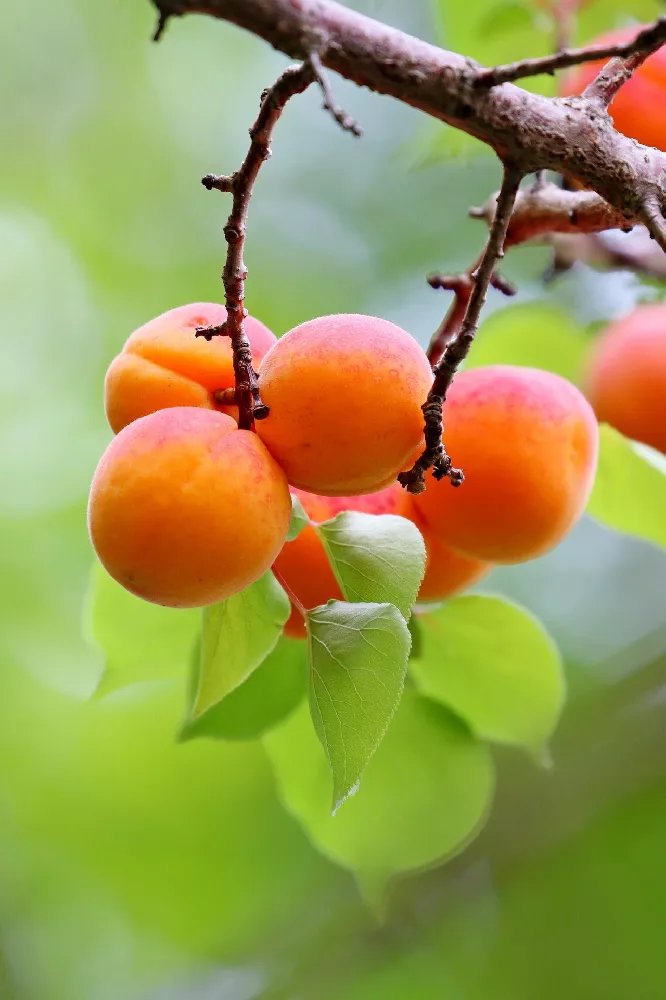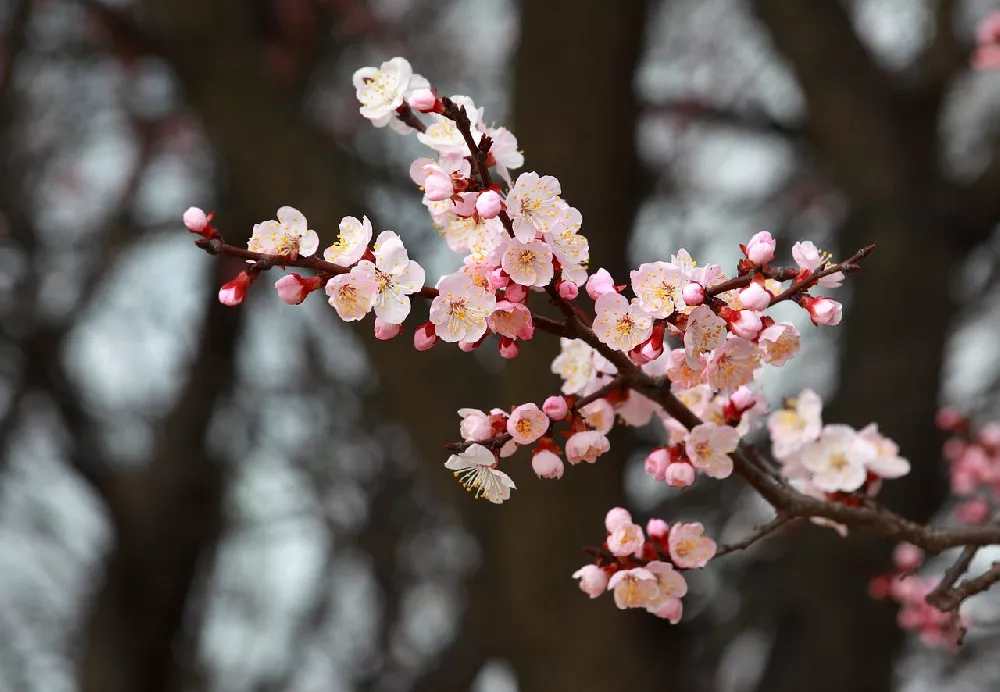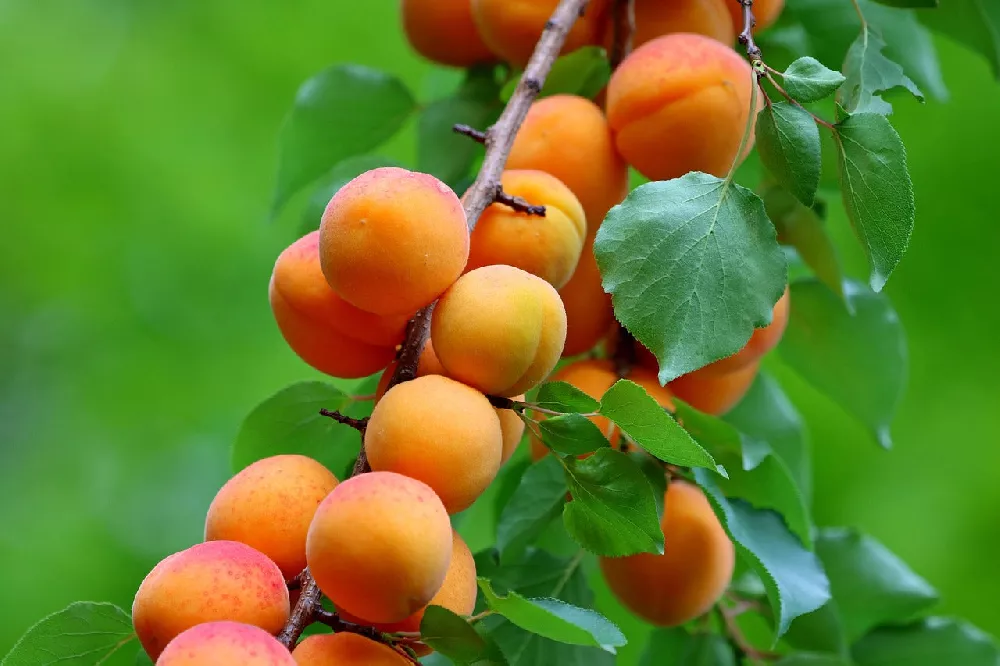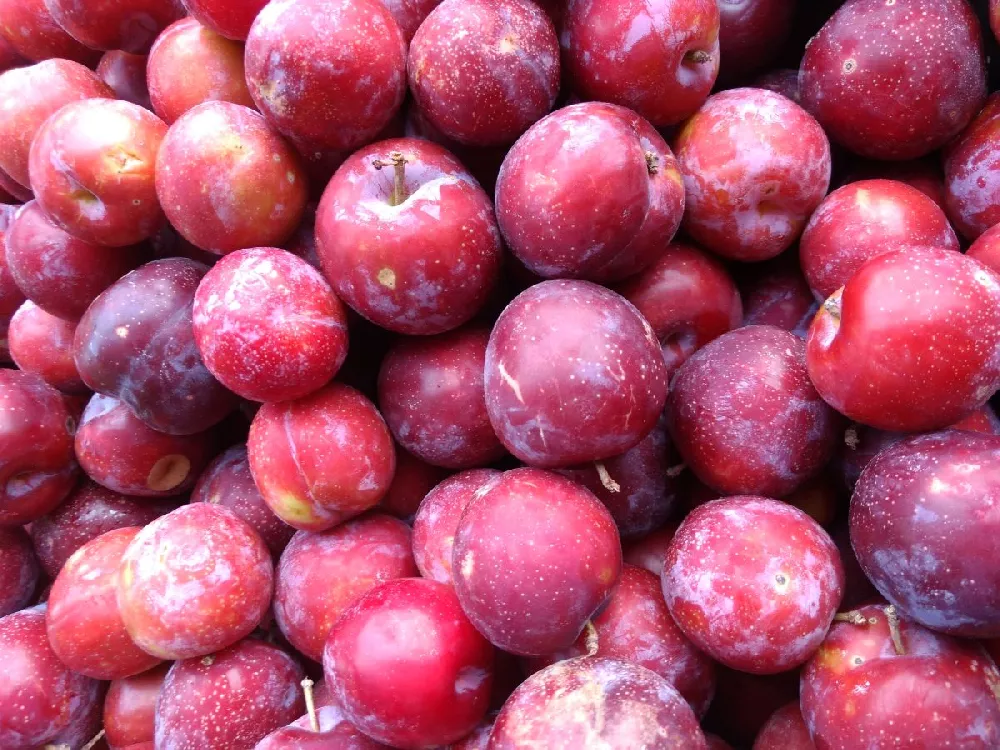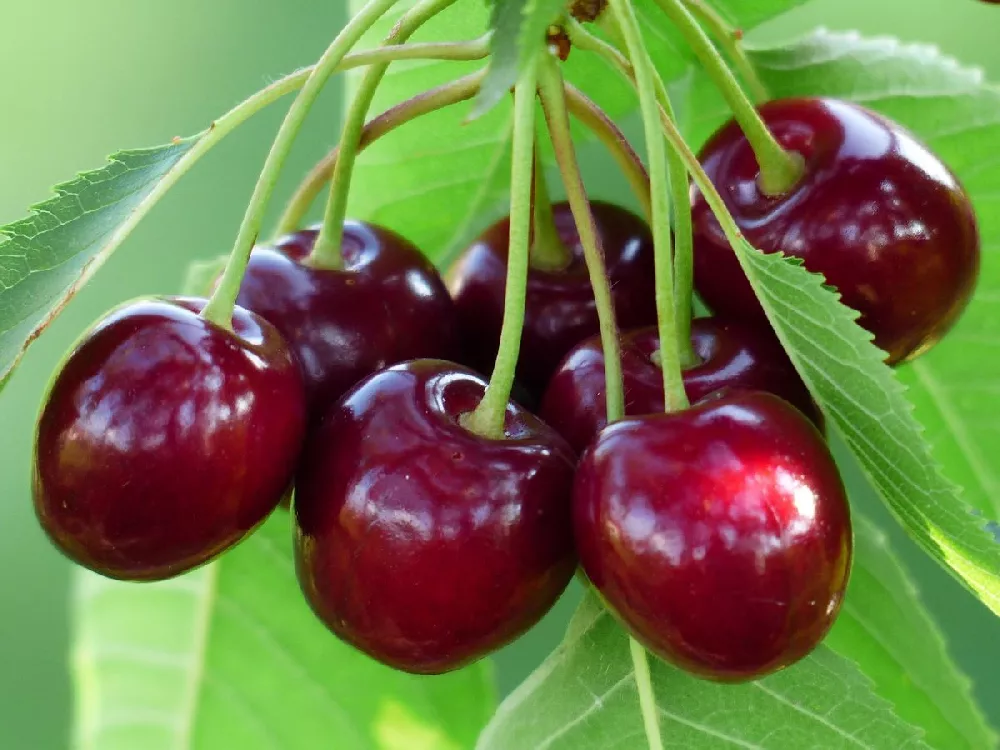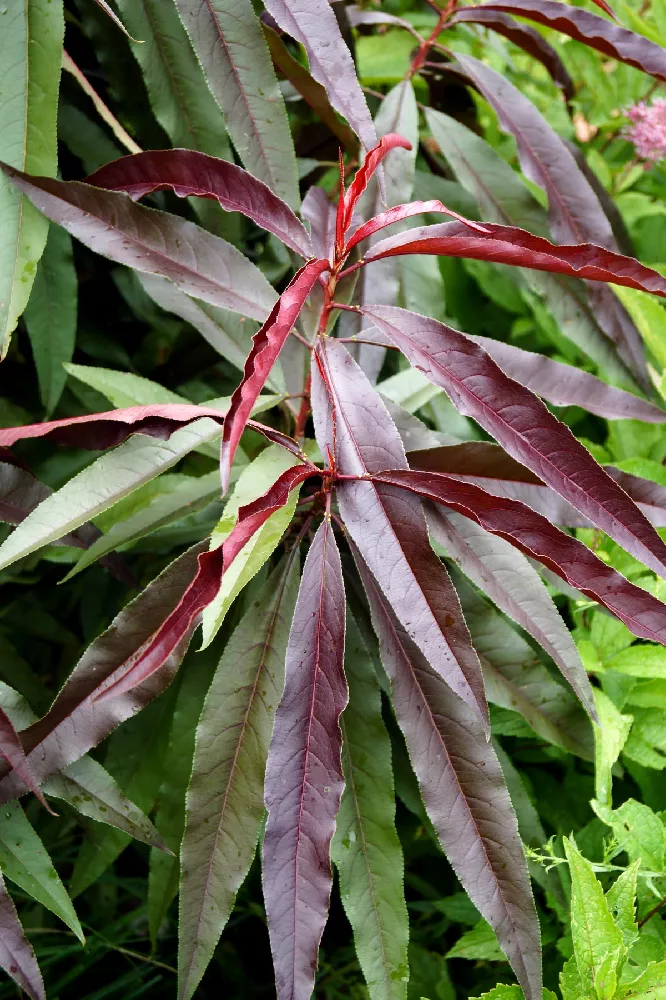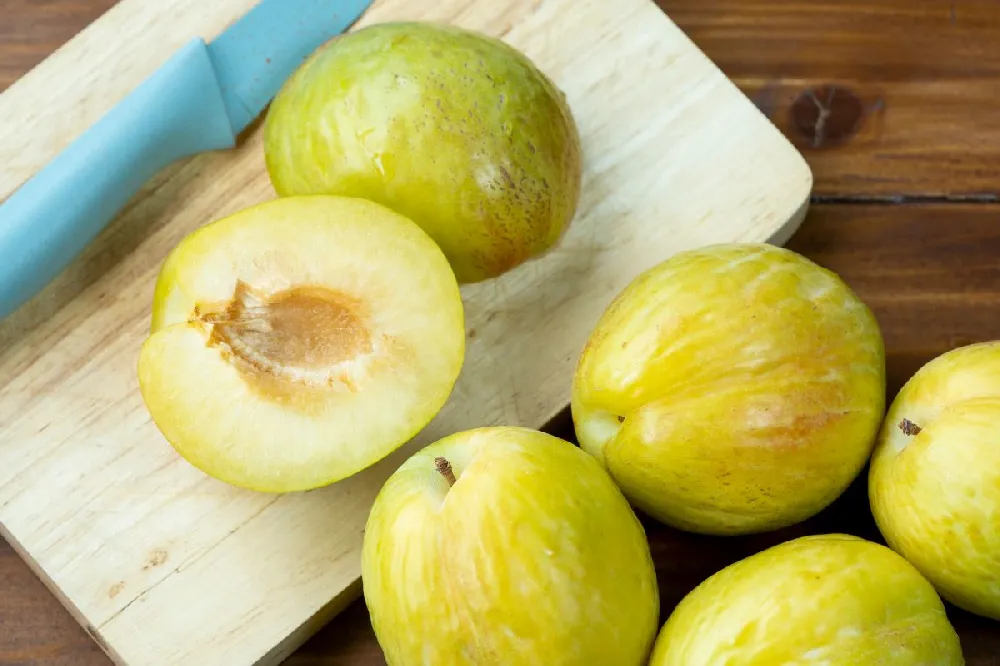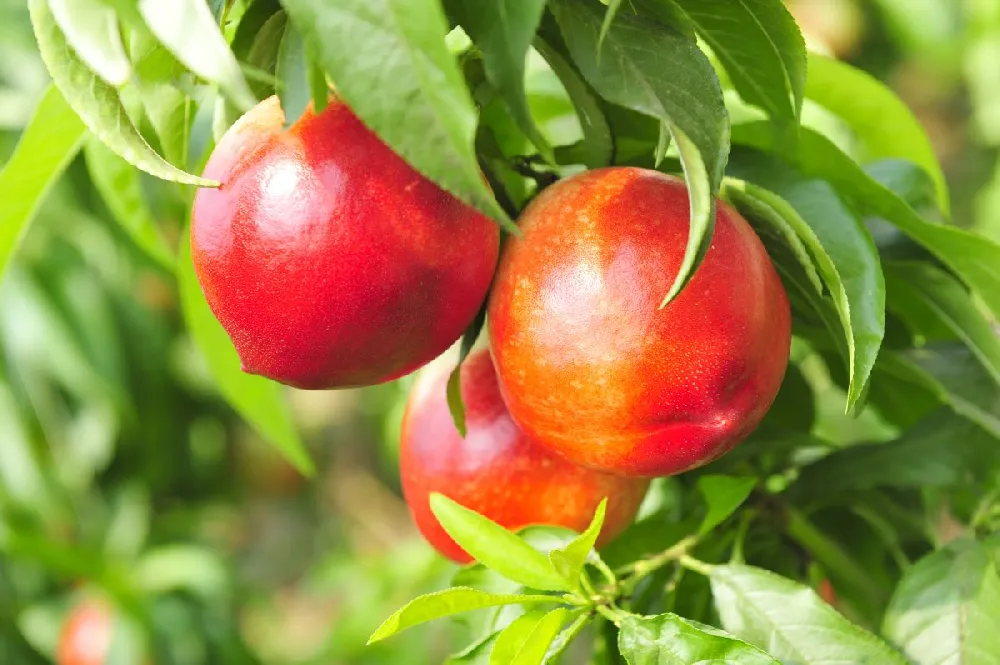- Home >
- Ornamental Trees >
- Blenheim Apricot Tree
Blenheim Apricot Tree for Sale - Buying & Growing Guide
There are several compelling reasons why the Blenheim is one of the most popular apricot trees in the United States. This plant, Prunus armeniaca 'Blenheim,' bears fruits late in the year that are plump, juicy and incredibly flavorful. But this plant is not only valuable for its edible fruits; it is also impressive as an ornamental plant thanks to its many white springtime flowers, which are both beautiful and capable of saturating your garden with a distinct sweet fragrance.
- The Blenheim Apricot Tree is both fruitful and fragrant.
- The fruits of this plant have an amazing flavor that balances sweetness and acidity.
- The white blooms of this plant make it look spectacular in spring.
Enter your zip code to find nearby stores that may carry this plant.
Plant Care
Sunlight

You should always plant a Blenheim Apricot Tree in full sunlight.
Watering
Plan to water this plant about once per week during most of the growing season.
Fertilizing

Feed your Blenheim Apricot Tree once in spring and once in fall with a nitrogen-rich fertilizer.
Planting and Care
Planting instructions
You should plant your Blenheim Apricot Tree in loamy soil that is slightly acidic to neutral. It is also crucial to ensure that the soil has great drainage. Additionally, while the Blenheim Apricot Tree can survive partial shade, it will likely produce better if it gets at least six hours of sunlight per day. To plant this tree, begin by digging a hole that is as deep as the root ball is tall and about twice as wide. Place the plant in the hole so that the trunk is vertical, then backfill and cover the area with mulch.
Watering and nutrients
Blenheim Apricot trees usually need water about once every week or every 10 days during the growing season. However, if your tree receives consistent weekly rainfall, you may not need to provide any supplemental water at all. The easiest way to know if the roots of your Blenheim Apricot Tree need more moisture is to feel the soil with your fingers. If you find that the soil is dry two inches below the surface or deeper, give your tree some water. When your tree reaches fruiting age, fertilize twice per year, in spring and fall, using a nitrogen-rich fertilizer.
Pollination
Since the most common goal when growing a Blenheim Apricot Tree is to produce fruits, successful pollination is very important. Thankfully, the Blenheim Apricot Tree is a self-fertile plant, which means that a single tree will be capable of conducting pollination and producing fruits. However, planting an additional apricot tree, even if it is a different cultivar, nearby can increase the size of your harvest. The Blenheim Apricot Tree relies on insects, such as bees, to facilitate the pollination process.
Pruning
The primary goal when pruning a Blenheim Apricot Tree is to help the plant develop a strong structure that is capable of holding many heavy fruits during harvest. This approach includes removing any branch that grows at a narrow-angle to the trunk while encouraging branches that grow more horizontally. You should also prune to thin the canopy and promote good air circulation. Most pruning should take place during the early spring as the leaves and flowers are just beginning to open.
Pests, diseases and animals
Unfortunately, there are many diseases that can significantly diminish the health and productivity of your Blenheim Apricot Tree. Some of these diseases, like canker, rot, dieback and shot hole disease, will affect the leaves and flowers of this tree, while other diseases, like ripe fruit rot, will cause damage to the fruits. Many of these diseases arise when a Blenheim Apricot Tree receives too much moisture, which is most common if you water it after your tree has already received sufficient moisture from natural rainfall.
Harvesting
After successful pollination occurs in spring, your Blenheim Apricot Tree will begin producing fruits. Those fruits will initially be small and green. As the season progresses, they will grow in size and change color. Once the fruits have lost all of their green hues and only show shades of yellow, orange and red, they will be ripe and ready to pick. When picking these fruits by hand, they should be relatively firm with a slight amount of softness.
Achieving maximum results
Cold temperatures are crucial for a Blenheim Apricot Tree. In fact, if this tree does not experience at least 300 chilling hours, hours in which the temperature is below 45 degrees Fahrenheit, each winter, it will likely fail to produce fruits. As such, those who experience mild winters, with temperatures at or consistently above 45 degrees, may not be able to grow this plant successfully. Generally, those living in hardiness zones five through nine should have success when growing a Blenheim Apricot for fruit production.
FAQs
What should you do after harvesting a Blenheim Apricot Tree?
After harvesting fruit from your Blenheim Apricot Tree, you should either eat them or store them right away. These fruits will taste excellent in their raw form, but they often do not store well as they can be prone to damage. If you want your fruits to have a longer shelf life, it is typically best to dry your apricots or can them to enjoy later.
How large does the Blenheim Apricot Tree grow?
The Blenheim Apricot Tree is a medium-sized tree that can grow to about 15 to 20 feet tall. At maturity, this tree often has a spread of about 15 feet wide as well. When planting this tree, you should account for its mature size and give it plenty of space to expand laterally without competing with other plants. Usually, this means giving the Blenheim Apricot Tree at least 12 feet of spacing or more.
How long does it take a Blenheim Apricot Tree to bear fruit?
After planting a Blenheim Apricot Tree, it will take about three years before the tree reaches a fruiting age. At that point, your tree will bloom with white flowers in spring, inviting insects to conduct pollination. After the bloom arrives, it typically takes about 100 days or more for the fruit to appear and mature into a harvestable form.
Compare Similar Products
You can't add more Product Name - Product size to the cart.
OK